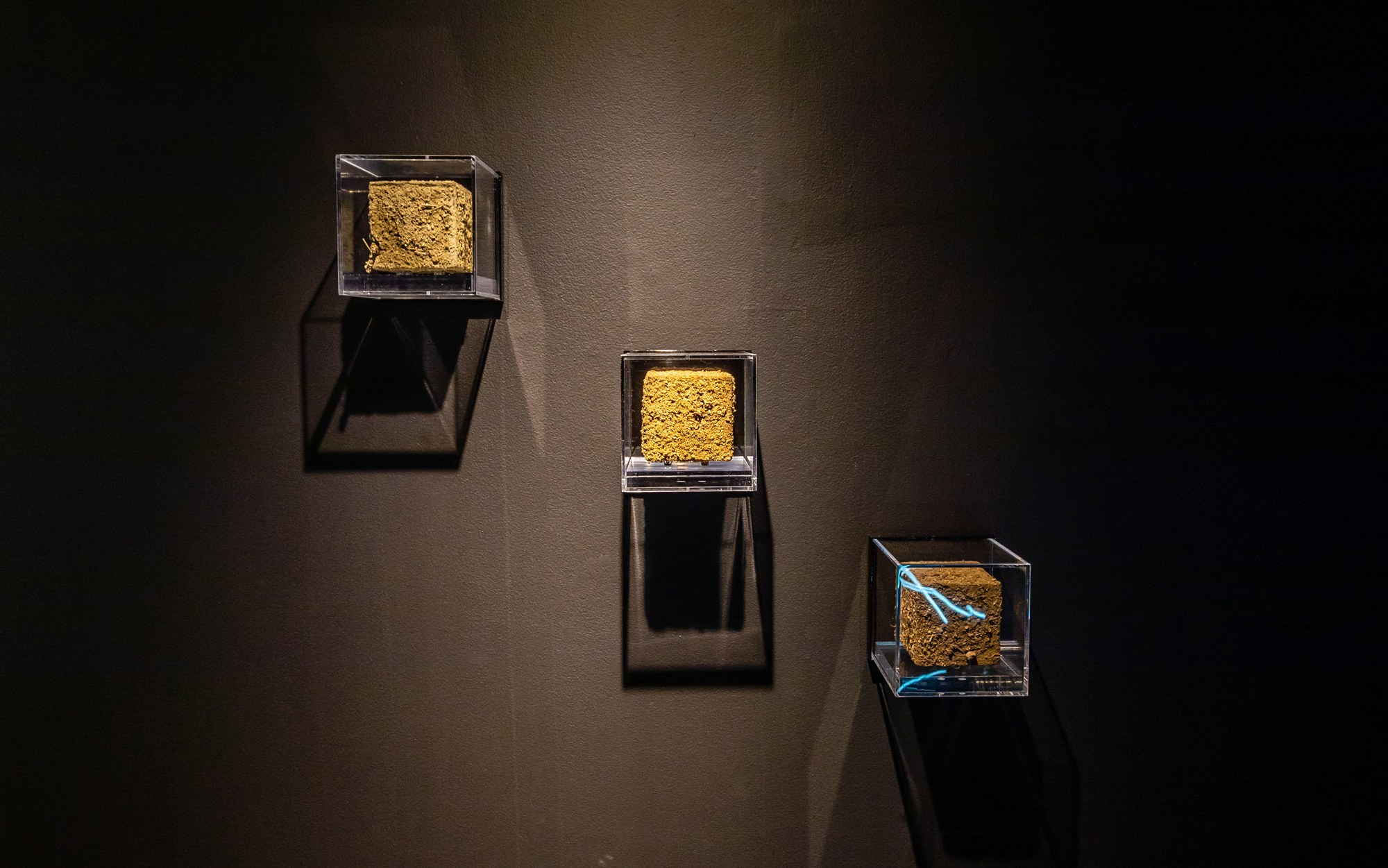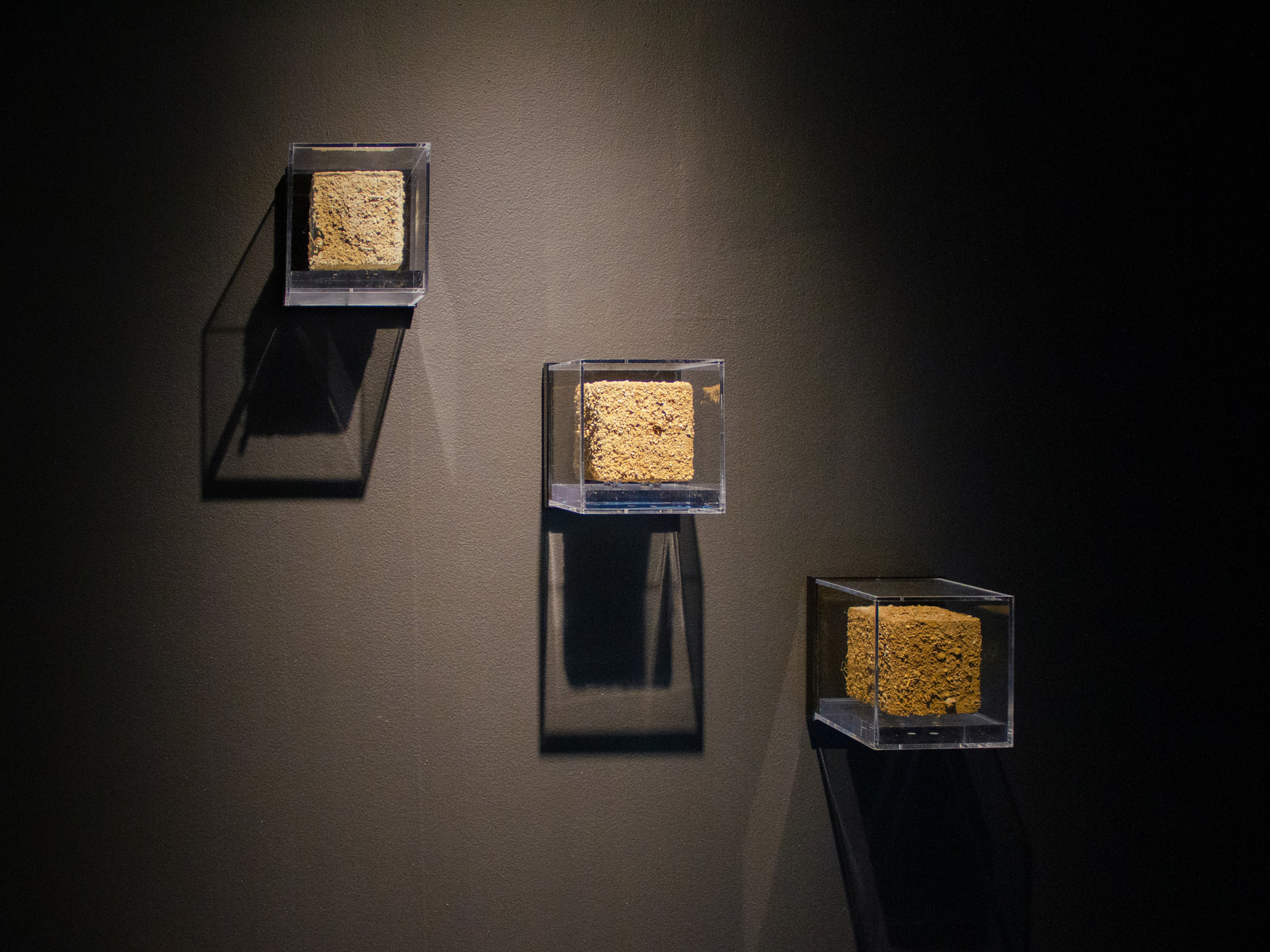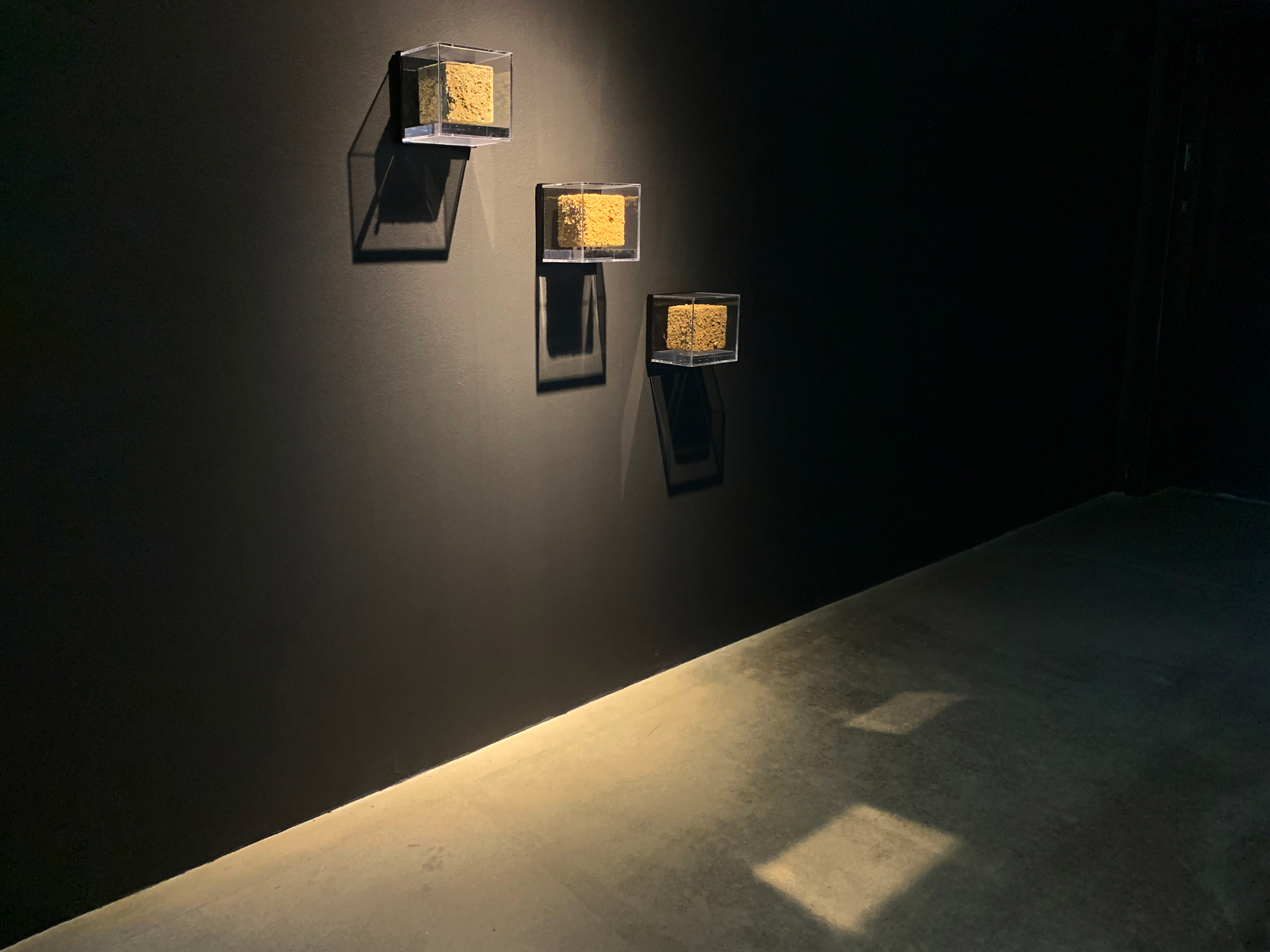
Headwaters
—
Headwaters
—
Headwaters
—
Headwaters applies terminology used to describe natural ecosystems to the source waters of each of the three California aqueducts. Housed in museum vitrines generally reserved for historical object collections, each piece is titled for the geographic location of the source source point of water diversion. Each cube (falsely) appears to be composed of compacted soil from the referenced site. These are future relics of a time when soil was commonplace and without value. These false fossils point to extraction to extinction, and raise questions of worth through an anthropocentric lens. The world view of value attained through objectness is challenged by the evolutionary nature of intangible elements including water and soil, and how continuous diversion and extraction has impacts far beyond even the most sophisticated comprehension.
Click on images below to view full screen.
Headwaters applies terminology used to describe natural ecosystems to the source waters of each of the three California aqueducts. Housed in museum vitrines generally reserved for historical object collections, each piece is titled for the geographic location of the source source point of water diversion. Each cube (falsely) appears to be composed of compacted soil from the referenced site. These are future relics of a time when soil was commonplace and without value. These false fossils point to extraction to extinction, and raise questions of worth through an anthropocentric lens. The world view of value attained through objectness is challenged by the evolutionary nature of intangible elements including water and soil, and how continuous diversion and extraction has impacts far beyond even the most sophisticated comprehension.
Click on images below to view full screen.
Headwaters applies terminology used to describe natural ecosystems to the source waters of each of the three California aqueducts. Housed in museum vitrines generally reserved for historical object collections, each piece is titled for the geographic location of the source source point of water diversion. Each cube (falsely) appears to be composed of compacted soil from the referenced site. These are future relics of a time when soil was commonplace and without value. These false fossils point to extraction to extinction, and raise questions of worth through an anthropocentric lens. The world view of value attained through objectness is challenged by the evolutionary nature of intangible elements including water and soil, and how continuous diversion and extraction has impacts far beyond even the most sophisticated comprehension.
Click on images below to view full screen.
Headwaters applies terminology used to describe natural ecosystems to the source waters of each of the three California aqueducts. Housed in museum vitrines generally reserved for historical object collections, each piece is titled for the geographic location of the source source point of water diversion. Each cube (falsely) appears to be composed of compacted soil from the referenced site. These are future relics of a time when soil was commonplace and without value. These false fossils point to extraction to extinction, and raise questions of worth through an anthropocentric lens. The world view of value attained through objectness is challenged by the evolutionary nature of intangible elements including water and soil, and how continuous diversion and extraction has impacts far beyond even the most sophisticated comprehension.
Click on images below to view full screen.

